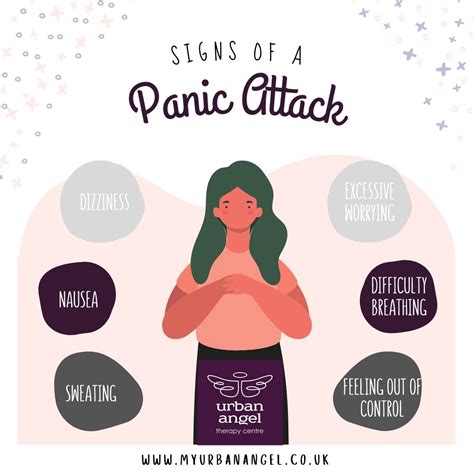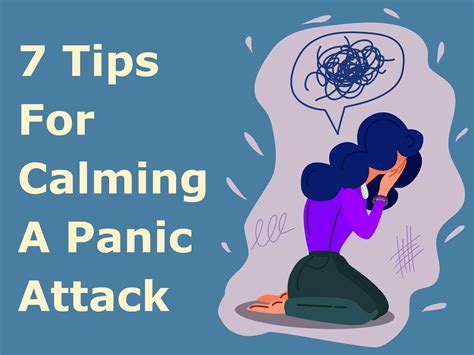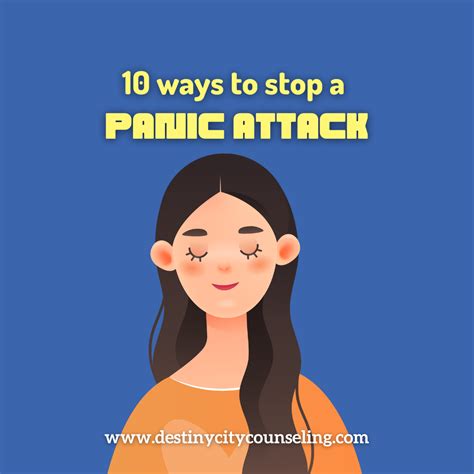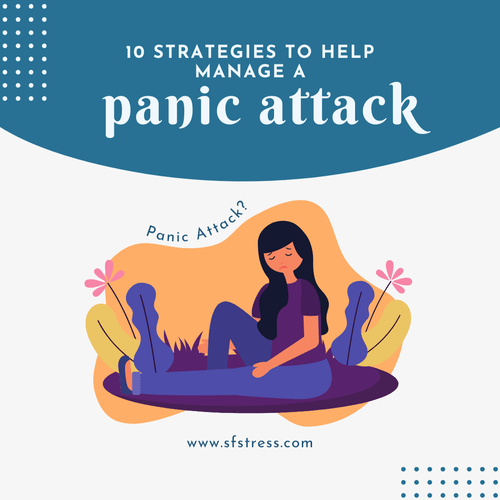Panic attacks can be overwhelming and frightening experiences that often come without warning. They are intense surges of anxiety that can cause physical and emotional distress, leaving individuals feeling powerless. While panic attacks are a common part of anxiety disorders, understanding their triggers and symptoms can help in managing them effectively. In this article, we’ll explore what panic attacks are, what causes them, and the strategies that can help you regain control during an episode. From deep breathing exercises to mindfulness and therapy options, these approaches aim to reduce the impact of panic attacks and improve your overall well-being. Managing anxiety is possible with the right tools and support.
Let’s explore this topic in detail with zopmj.com
1. Introduction
Panic attacks are sudden, intense episodes of fear or anxiety that can be both physically and emotionally overwhelming. These attacks often strike without warning, leaving individuals feeling as if they are losing control, experiencing a heart attack, or even dying. Although panic attacks are a defining characteristic of anxiety disorders, many people may experience them at some point in their lives due to stress, trauma, or other triggers.
Panic attacks, unpredictable and often frightening, can trigger a cycle of anxiety that disrupts daily life. This fear of future episodes can be overwhelming, but with the right tools and support, managing panic attacks is possible. This article will delve into the nature of panic attacks, their common triggers and symptoms, and provide evidence-based strategies for managing them. Whether you are personally experiencing panic attacks or supporting someone who is, understanding these approaches can significantly improve mental health and well-being.

2. Understanding Panic Attacks
Panic attacks are intense periods of fear or discomfort that rapidly escalate, reaching their peak within minutes. These episodes are often accompanied by a combination of physical and emotional symptoms, including: rapid heart rate, sweating, trembling, shortness of breath, chest pain, dizziness, and a sense of detachment from reality. The overwhelming nature of these symptoms can lead many to believe they are experiencing a heart attack or other life-threatening event, further intensifying their anxiety.
While panic attacks are most frequently linked to anxiety disorders, they can also arise in reaction to specific stressors, traumatic experiences, or even without a clear trigger. Distinguishable from generalized anxiety, panic attacks are intense, concentrated episodes of fear that typically last from a few minutes to half an hour.
Panic attacks, while not inherently harmful, can spark a fear of future episodes, leading to panic disorder. This disorder involves a persistent dread of experiencing further attacks. Recognizing that panic attacks are a natural response to anxiety, stress, or nervous system imbalance is crucial for understanding and managing them. This understanding serves as the foundation for effectively reducing their impact on daily life.

3. Common Triggers of Panic Attacks
Panic attacks can be triggered by a wide range of factors, some obvious and others more subtle or seemingly random. A prominent cause is heightened stress, stemming from work, relationships, or significant life changes. Stressful events, such as bereavement, divorce, or major transitions, can heighten the risk of panic attacks. In some cases, chronic stress from ongoing issues can accumulate gradually, ultimately leading to sudden and unexpected attacks.
Trauma is another common trigger for panic attacks. Individuals who have endured traumatic experiences, like accidents or assaults, may be more susceptible to these episodes. Specific situations or environments that evoke memories of the trauma can trigger an attack. Furthermore, social settings, where individuals feel evaluated or lack a sense of control, can induce anxiety and provoke a panic attack.
Triggers can also be rooted in physical factors. Excessive caffeine intake, insufficient sleep, and specific medical conditions can all play a role. Moreover, changes in the body’s physiology, like hormonal shifts or low blood sugar, can also precipitate an attack.
Finally, individuals with a history of anxiety or other mental health conditions may be more prone to panic attacks. This is because their heightened baseline anxiety makes them more susceptible to sudden episodes of intense fear or discomfort.

4. Symptoms of Panic Attacks
Panic attacks can manifest through a wide range of physical and emotional symptoms, often occurring suddenly and intensely. One of the most common physical symptoms is a rapid or pounding heartbeat, which can make individuals feel as though they are having a heart attack. This is frequently accompanied by shortness of breath, chest pain, or a choking sensation. Sweating, trembling, dizziness, and lightheadedness are also typical signs, as the body reacts to the surge of anxiety.
Emotionally, individuals may feel an overwhelming sense of fear or dread, often experiencing detachment from their surroundings or even from themselves, a phenomenon known as depersonalization or derealization. This detachment can amplify the fear, as it feels like reality itself is slipping away.
Other emotional symptoms encompass a fear of losing control or succumbing to madness, coupled with an intense fear of death, even though the attack poses no actual threat to life. These symptoms typically reach their peak within 10 minutes, though their effects may persist, leaving individuals feeling drained and emotionally unsettled.
Recognizing these symptoms as part of an anxiety response is vital for managing panic attacks. This understanding can help prevent further escalation and facilitate recovery from the episode.
5. Strategies for Managing Panic Attacks:
Managing panic attacks effectively relies on a personalized approach, utilizing a range of strategies. One immediate technique is deep breathing exercises, which work to soothe the nervous system. This involves taking deep breaths in through the nose and exhaling slowly through the mouth, which can lessen feelings of panic.
Mindfulness techniques, like focusing on the present moment or employing grounding exercises, can also be helpful. These practices encourage individuals to acknowledge their feelings without judgment, which in turn helps to reduce the intensity of the panic.
Cognitive behavioral therapy (CBT) is another powerful tool for managing anxiety. It works by addressing the negative thought patterns that contribute to anxiety. A mental health professional can guide individuals through this process, teaching them how to reframe their thoughts in a more positive and helpful way.
For some, medication may be necessary to help manage symptoms, and consulting a healthcare provider can provide options tailored to individual needs. Additionally, lifestyle changes—such as regular exercise, a balanced diet, and sufficient sleep—can improve overall mental health and resilience against panic attacks.
– Deep breathing exercises
Deep breathing exercises are a highly effective strategy for managing panic attacks. This is because they activate the body’s relaxation response, which helps counteract the physical symptoms of anxiety. During a panic attack, individuals often breathe rapidly and shallowly, making dizziness and shortness of breath worse. Practicing deep breathing techniques allows individuals to regain control of their breathing patterns and calm their nervous system.
Begin by finding a comfortable position, either sitting or lying down. Close your eyes and inhale deeply through your nose, counting to four as your abdomen expands fully. Hold your breath for a count of four, then exhale slowly through your mouth, counting to six or eight, emptying your lungs completely. Focus on the sensations of your breath entering and leaving your body, letting go of any distracting thoughts.
Continue this breathing pattern for a few minutes, extending the length of each inhale and exhale as you feel more at ease. By integrating deep breathing exercises into your daily life, you can maximize their benefits. This makes them a powerful tool for alleviating anxiety and preventing panic attacks.
– Mindfulness techniques
Mindfulness practices serve as potent tools for mitigating panic attacks. They empower individuals to remain anchored in the present moment, lessening feelings of anxiety and fear. Through cultivating awareness of the current experience, individuals can develop the ability to observe their thoughts and feelings without judgment, contributing to the dissipation of panic.
The 5-4-3-2-1 grounding exercise is a powerful mindfulness technique that utilizes your senses to bring you back to the present moment. To engage in this exercise, begin by taking a deep breath. Then, identify five things you can see in your surroundings. Next, name four things you can touch. After that, list three things you can hear. Follow this by identifying two things you can smell. Finally, pinpoint one thing you can taste. This practice can effectively redirect your attention away from overwhelming emotions and help you feel grounded in the present.
Another technique involves mindful observation, where you select an object in your surroundings to concentrate on. Devote a few minutes to meticulously observing its details, such as its color, shape, texture, and any other distinguishing characteristics. This practice can redirect your attention from worrisome thoughts towards sensory experiences, fostering calmness and lessening the severity of panic symptoms. Regular mindfulness practice can bolster emotional resilience and aid in preventing future panic attacks.
– Cognitive behavioral therapy
Cognitive Behavioral Therapy (CBT) is a proven treatment for managing panic attacks and anxiety disorders. This evidence-based approach focuses on identifying and changing negative thoughts and behaviors that contribute to panic. By addressing the underlying cognitive distortions, individuals can learn to reframe their anxiety in a more positive way.
In Cognitive Behavioral Therapy (CBT), therapists collaborate with clients to pinpoint specific triggers and the accompanying thoughts. For example, someone might associate a racing heartbeat with the fear of losing control. Guided sessions empower individuals to challenge these irrational thoughts and substitute them with more rational, calming statements.
Cognitive Behavioral Therapy (CBT) often incorporates exposure therapy, a technique where individuals confront their fears in a controlled setting, gradually increasing their exposure. This process helps them become less sensitive to the triggers of panic attacks, leading to a reduction in anxiety over time. Additionally, methods like journaling and thought records may be utilized to monitor progress and strengthen positive coping mechanisms.
Cognitive Behavioral Therapy (CBT) equips individuals with practical skills to manage their anxiety. This empowers them to regain control over their lives and experience a decrease in both the frequency and intensity of panic attacks.
– Medication options
Medication can be a powerful tool in managing panic attacks, particularly for those who experience frequent or severe episodes that interfere with their daily routine. The type of medication prescribed will depend on the individual’s unique symptoms, medical history, and overall health.
For anxiety disorders, including panic attacks, Selective Serotonin Reuptake Inhibitors (SSRIs) are often the initial treatment choice. These medications function by boosting serotonin levels in the brain, which can help stabilize mood and lessen anxiety. Some commonly prescribed SSRIs include fluoxetine, sertraline, and escitalopram.
Benzodiazepines, such as lorazepam or alprazolam, may be prescribed for short-term relief during a panic attack due to their fast-acting calming effects. However, they are generally recommended for short-term use due to the potential for dependence.
Beta-blockers can also be beneficial in managing the physical symptoms of panic attacks, such as rapid heart rate and tremors. They achieve this by blocking the effects of adrenaline, which promotes a feeling of calmness.
To effectively manage panic attacks, individuals should consult with a healthcare provider to determine the best medication for their specific needs. This approach can be enhanced by combining medication with therapy and lifestyle modifications, offering a comprehensive strategy for addressing panic attacks.
– Lifestyle changes
Lifestyle changes can significantly improve both panic attack management and overall mental health. One key change is incorporating regular physical activity into your daily routine. Exercise releases endorphins, which can help reduce stress and anxiety. Aim for at least 30 minutes of moderate exercise most days of the week, whether through walking, jogging, yoga, or any other activity you enjoy.
Maintaining a balanced diet is another crucial aspect. Consuming a variety of nutrient-rich foods can contribute to overall brain health and mood stability. It is essential to reduce caffeine and sugar intake, as both can trigger anxiety and worsen panic symptoms.
A consistent sleep schedule is crucial for managing panic attacks. Aim for 7-9 hours of quality sleep each night, as sleep deprivation can significantly increase anxiety levels. In addition, practicing relaxation techniques like meditation, deep breathing, or progressive muscle relaxation can promote a sense of calm and reduce the occurrence of panic attacks.
Finally, building strong social connections and seeking support from friends, family, or support groups can provide comfort and reduce feelings of isolation. Through these lifestyle changes, individuals can improve their resilience against panic attacks and foster long-term mental well-being.
6. Seeking Professional Help
For those struggling with panic attacks, seeking professional help is crucial. Mental health professionals provide invaluable support and guidance in overcoming these challenges. A therapist or counselor can identify the root causes of panic attacks and create personalized coping strategies. Cognitive Behavioral Therapy (CBT) is particularly effective in treating panic disorders. It equips individuals with the skills to challenge negative thoughts and confront their fears in a structured way.
Beyond therapy, a psychiatrist may assess the need for medication to alleviate symptoms. This approach can be especially helpful for individuals who experience frequent or severe panic attacks. Regular check-ups with a healthcare professional ensure that any prescribed medications are monitored for their efficacy and adjusted as required.
Support groups provide an invaluable resource by connecting individuals with others who share similar experiences. Through the sharing of coping strategies and personal stories, these groups foster a sense of community and help reduce feelings of isolation.
Seeking help for panic attacks is a sign of strength, not weakness. Taking proactive steps to manage these attacks, such as seeking professional support, can lead to significant improvements in emotional well-being and overall quality of life. By embracing this journey, individuals can empower themselves to regain control and reduce the impact of panic attacks on their lives.
7. Coping Mechanisms for Loved Ones
Supporting someone experiencing panic attacks can be a difficult and emotionally draining journey. Yet, by understanding the condition and employing effective coping strategies, loved ones can build a nurturing environment conducive to healing. A crucial first step is for loved ones to educate themselves about panic attacks and anxiety disorders. This knowledge can shed light on the experience, enabling them to offer more informed and supportive care.
During a panic attack, it is vital to remain calm and offer reassurance to the individual that they are safe. A comforting presence is essential, but avoid being intrusive. Encourage deep breathing or mindfulness techniques to help them regain control. It’s crucial to avoid dismissing their feelings or telling them to “calm down,” as this can invalidate their experience.
Active listening and non-judgmental acceptance of their fears are crucial. Often, the mere act of being present and attentive offers significant solace.
Encouraging professional help is also a crucial step. Offer to accompany them to therapy sessions or support groups, if they feel comfortable doing so.
Last but not least, caregivers must prioritize their own well-being. Helping someone manage panic attacks can be emotionally taxing, making it essential for loved ones to seek support for themselves and engage in activities that promote their mental and physical health. Balancing the needs of others with self-care allows both the caregiver and the person with panic attacks to flourish.
8. Conclusion
To effectively manage panic attacks, a multi-pronged strategy is essential. This involves gaining a thorough understanding of the condition, pinpointing triggers, and implementing effective coping mechanisms. Deep breathing exercises, mindfulness techniques, and Cognitive Behavioral Therapy (CBT) equip individuals with the tools to navigate their anxiety and reclaim control over their lives. Medication can provide supplemental assistance for those who require it. Meanwhile, lifestyle modifications, including regular exercise, a balanced diet, and adequate sleep, can significantly enhance overall well-being and contribute to long-term panic attack management.
Seeking professional help is equally crucial, as therapists and healthcare providers can provide personalized support and resources. Moreover, loved ones are integral to the recovery process, offering understanding and encouragement.
Creating a supportive environment and utilizing these strategies can help individuals experiencing panic attacks find relief and improve their overall well-being. Remember that recovery is a process, and seeking assistance is crucial for healing. With time, patience, and the proper tools, managing panic attacks effectively and living a fulfilling life is achievable.
zopmj.com

